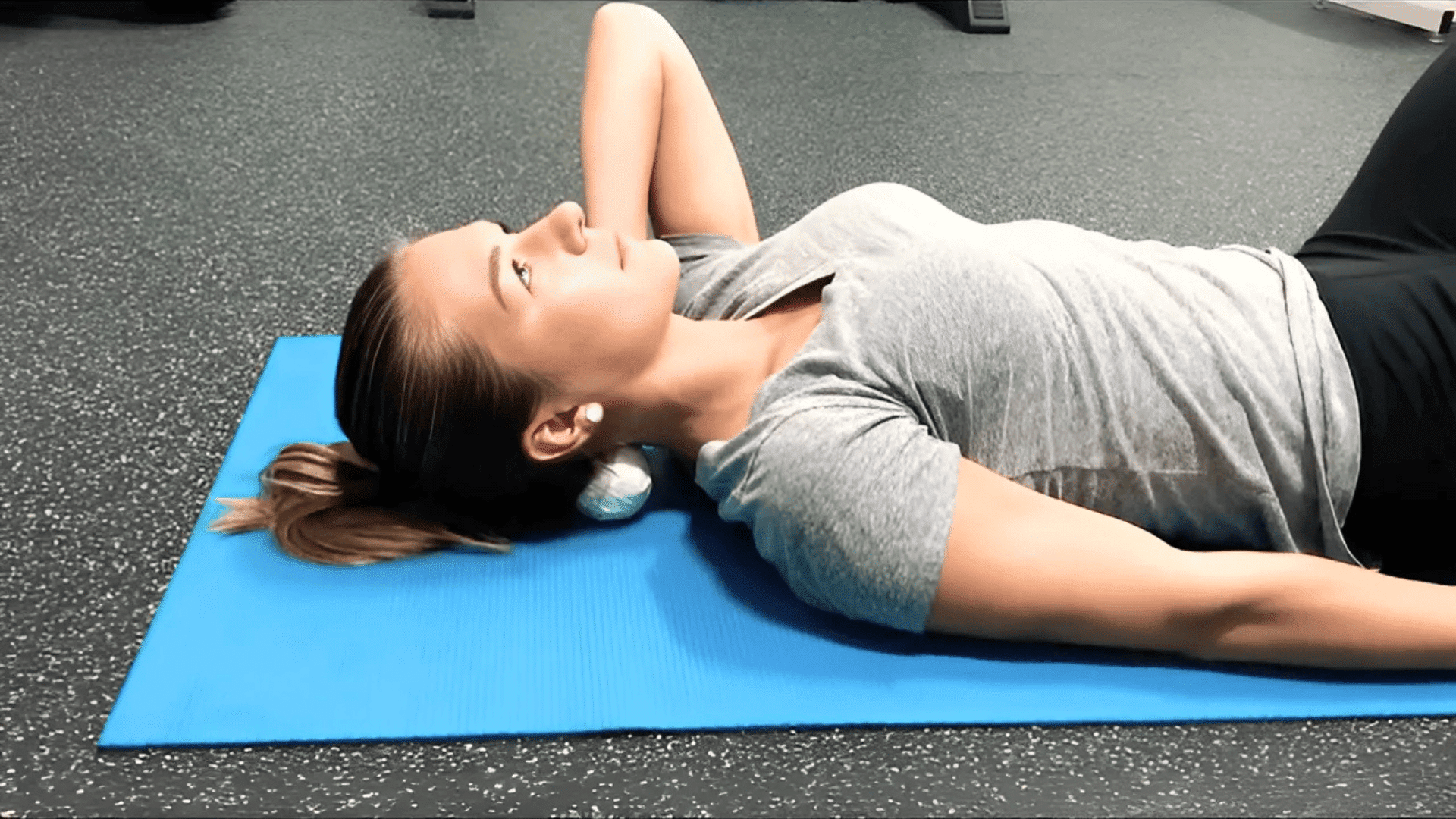I’ve always been curious about how certain conditions affect daily comfort, and occipital neuralgia really caught my attention. The sudden, sharp pain it causes can disrupt so much more than just the moment; it can throw off the whole day.
That’s why I started looking into simple, safe exercises that may help ease the strain. I found that gentle stretches and mindful movements can make a meaningful difference.
Now it’s your turn to see these ideas. You’ll see how to relax tight neck muscles, strengthen your upper back, and use breathing to calm flare-ups.
Go slowly, pay attention to your limits, and notice what feels right. These small changes can help you move with more ease over time
Occipital Neuralgia Exercises for Pain Relief
Finding relief from occipital neuralgia often starts with gentle movement. These exercises are designed to ease pressure in the neck and upper back, support healthier posture, and calm irritation around the occipital nerves.
Practicing them regularly may help reduce flare-ups and make everyday activities feel easier. Here are some safe exercises that may help reduce discomfort:
1. Neck Flexion and Extension Stretches
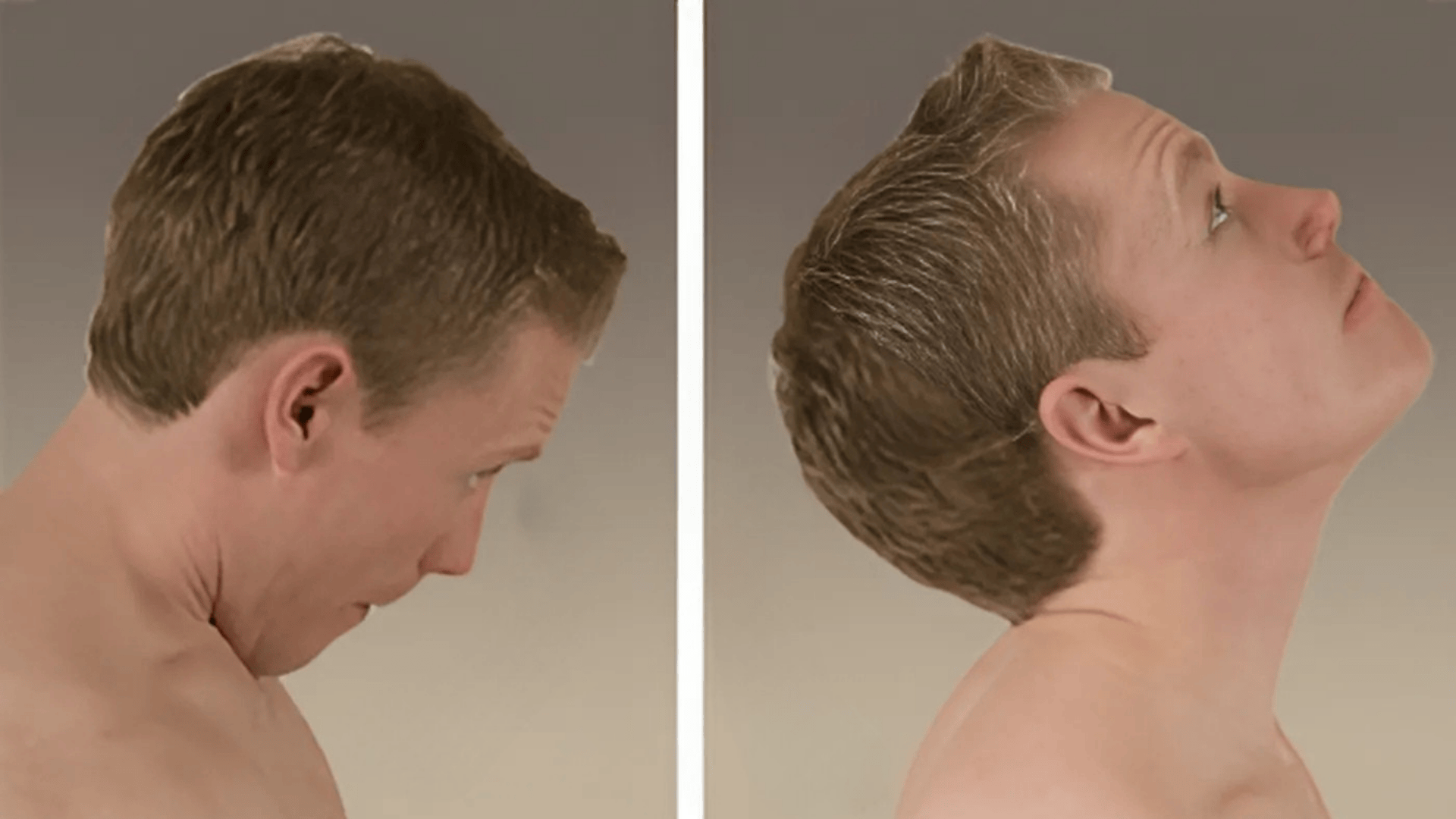
Sit or stand with a straight back and shoulders relaxed. Slowly bring your chin down toward your chest, keeping the motion smooth. Hold for about 10 seconds, then return to neutral. Next, tilt your head slightly back, just enough to feel a mild stretch, and hold for 5 seconds. Repeat 5–10 times, moving slowly.
Why it helps: Encourages flexibility in the upper neck and prevents stiffness from poor posture. By gently stretching both forward and backward, you reduce pressure on the occipital nerves without straining the muscles.
2. Chin Tucks

Sit or stand tall, gaze straight ahead. Without nodding or tilting your head, pull your chin straight back, creating a “double chin” effect. Hold for 5 seconds, then relax. Repeat 8–10 times. Perform 1–2 sets throughout the day.
Why it helps: Strengthens deep neck stabilizers, which are often weak in people with forward-head posture. This correction eases strain on the occipital nerves and promotes healthier alignment.
3. Shoulder Blade Squeezes
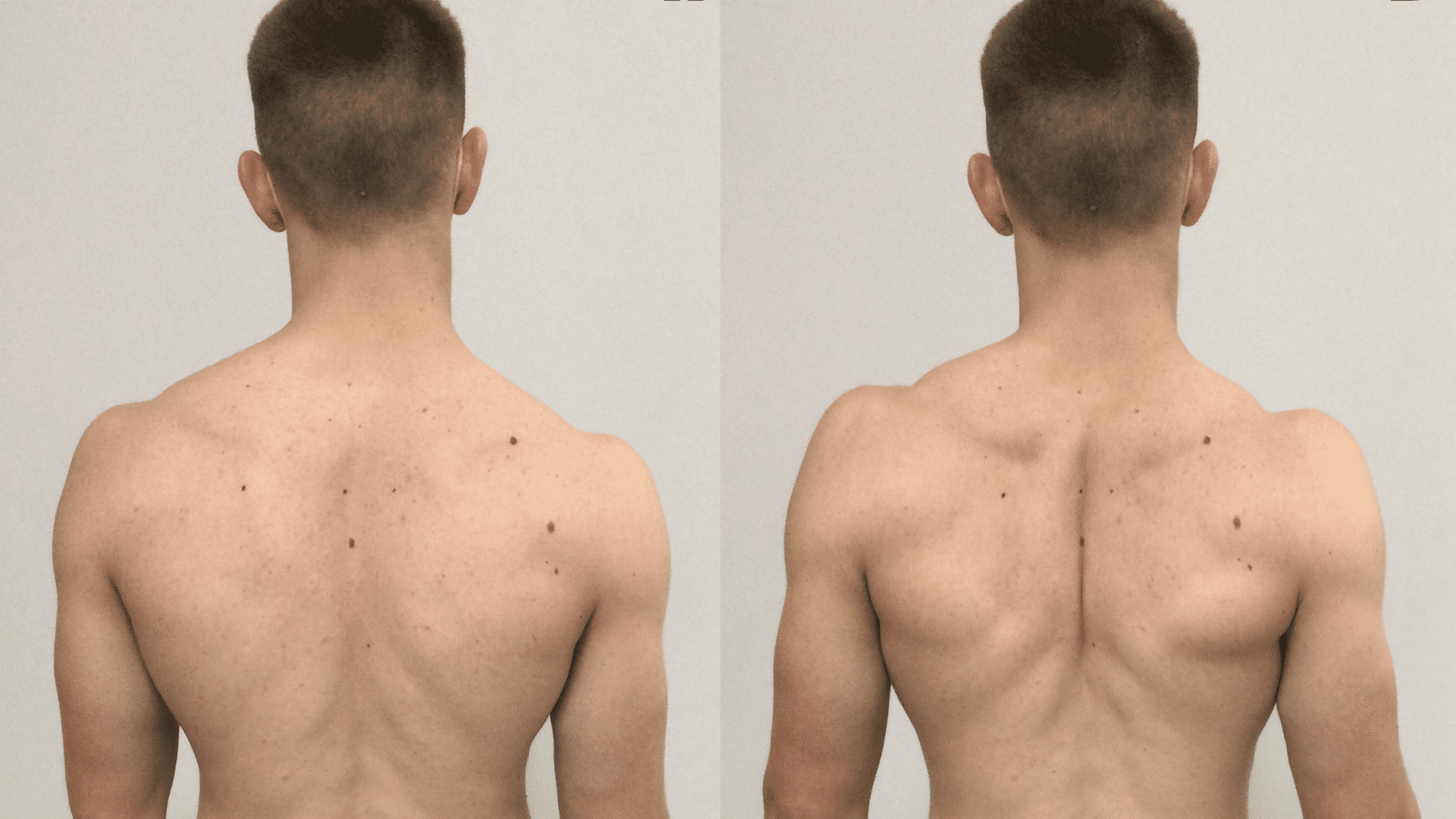
Sit or stand with arms relaxed at your sides. Draw your shoulder blades back and down, gently opening the chest. Hold for 5 seconds, then relax. Perform 10–12 repetitions, 2–3 times daily if you sit for long hours.
Why it helps: Strengthens postural muscles in the upper back, helping to counteract slouching that compresses the neck and irritates nerves.
4. Cat-Cow Stretch

Begin on hands and knees with wrists under shoulders and knees under hips. Inhale as you arch your back, lifting your head and tailbone (cow pose). Exhale as you round your spine, tucking your chin to your chest and pelvis under (cat pose). Move slowly through 8–10 cycles.
Why it helps: Improves mobility through the entire spine, increases circulation, and loosens tight muscles in the neck and shoulders that contribute to nerve irritation.
5. Suboccipital Release with a Tennis Ball

Lie on your back with knees bent for comfort. Place a tennis ball at the base of your skull and gently let your head rest into it. Slowly move side to side or pause over tender spots for 1–2 minutes. Avoid pressing too hard.
Why it helps: Provides a gentle massage to the suboccipital muscles, which often become overactive and irritate the occipital nerves. This technique releases tension and reduces pain flare-ups.
6. Thoracic Extension
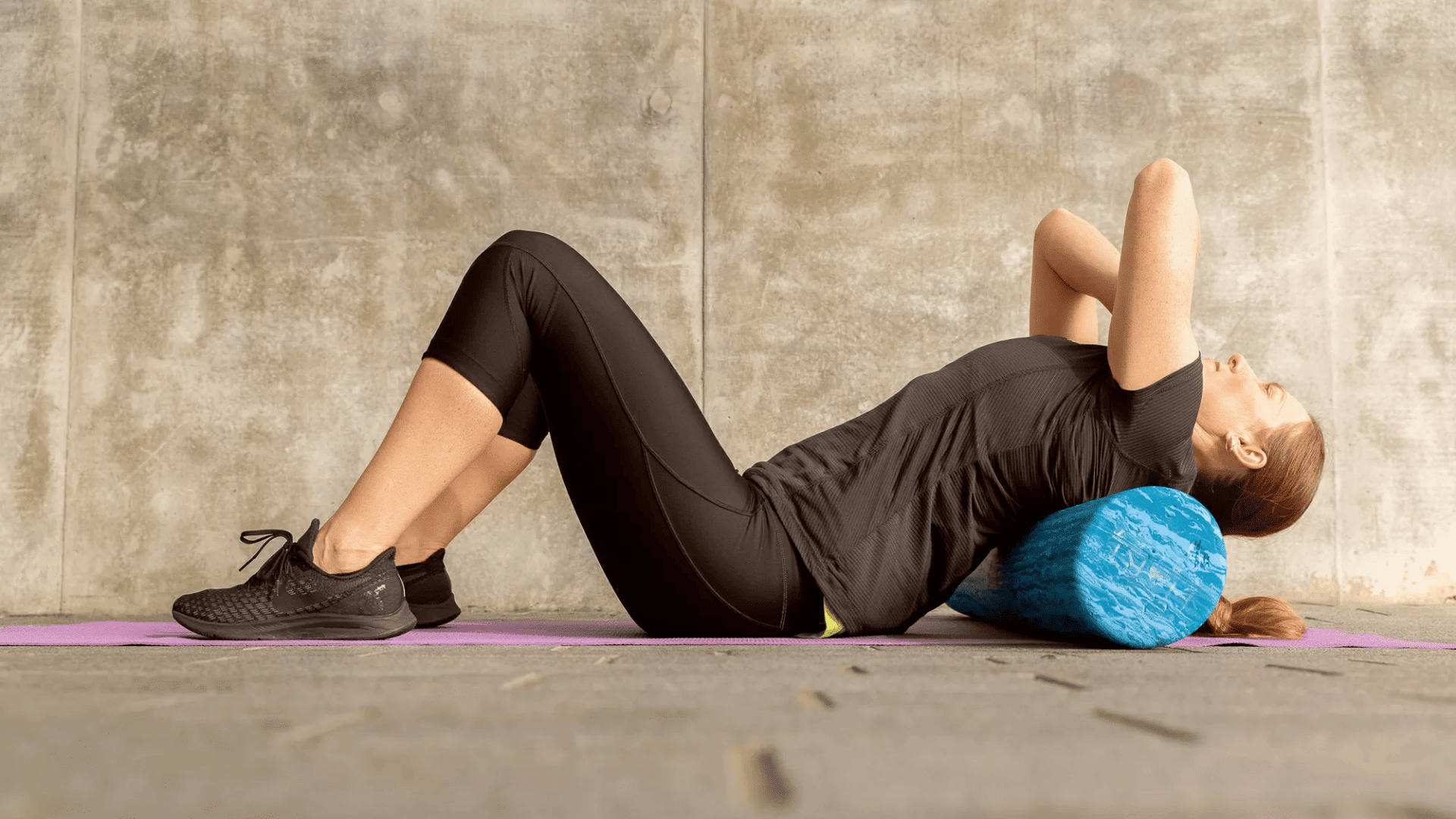
Sit in a chair with a supportive backrest. Place your hands behind your head, elbows wide. Gently lean back over the chair’s edge, pausing for 5–10 seconds, then return upright. Repeat 5–8 times.
Why it helps: Improves posture by opening the chest and upper back. This reduces forward-head posture, which can increase nerve compression and pain in the neck.
7. Deep Neck Flexor Strengthening
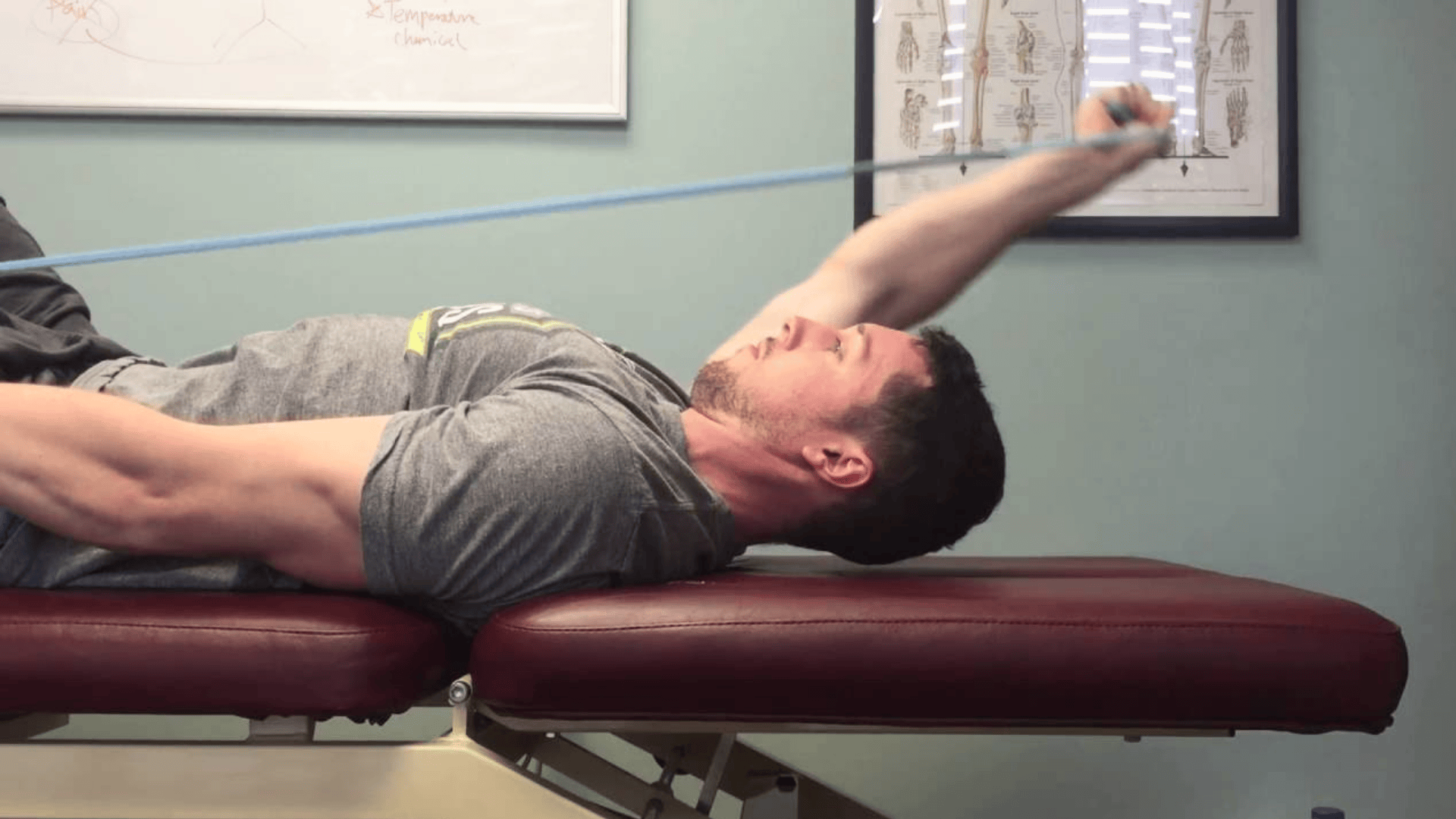
Lie flat on your back with knees bent. Tuck your chin slightly, then press the back of your head into the floor without lifting. Hold 5 seconds, relax, and repeat 8–10 times. Over time, progress to light resistance with a folded towel.
Why it helps: Strengthens small stabilizing muscles in the front of the neck, improving head and spine alignment and lowering the risk of recurrent neuralgia.
8. Shoulder Shrugs
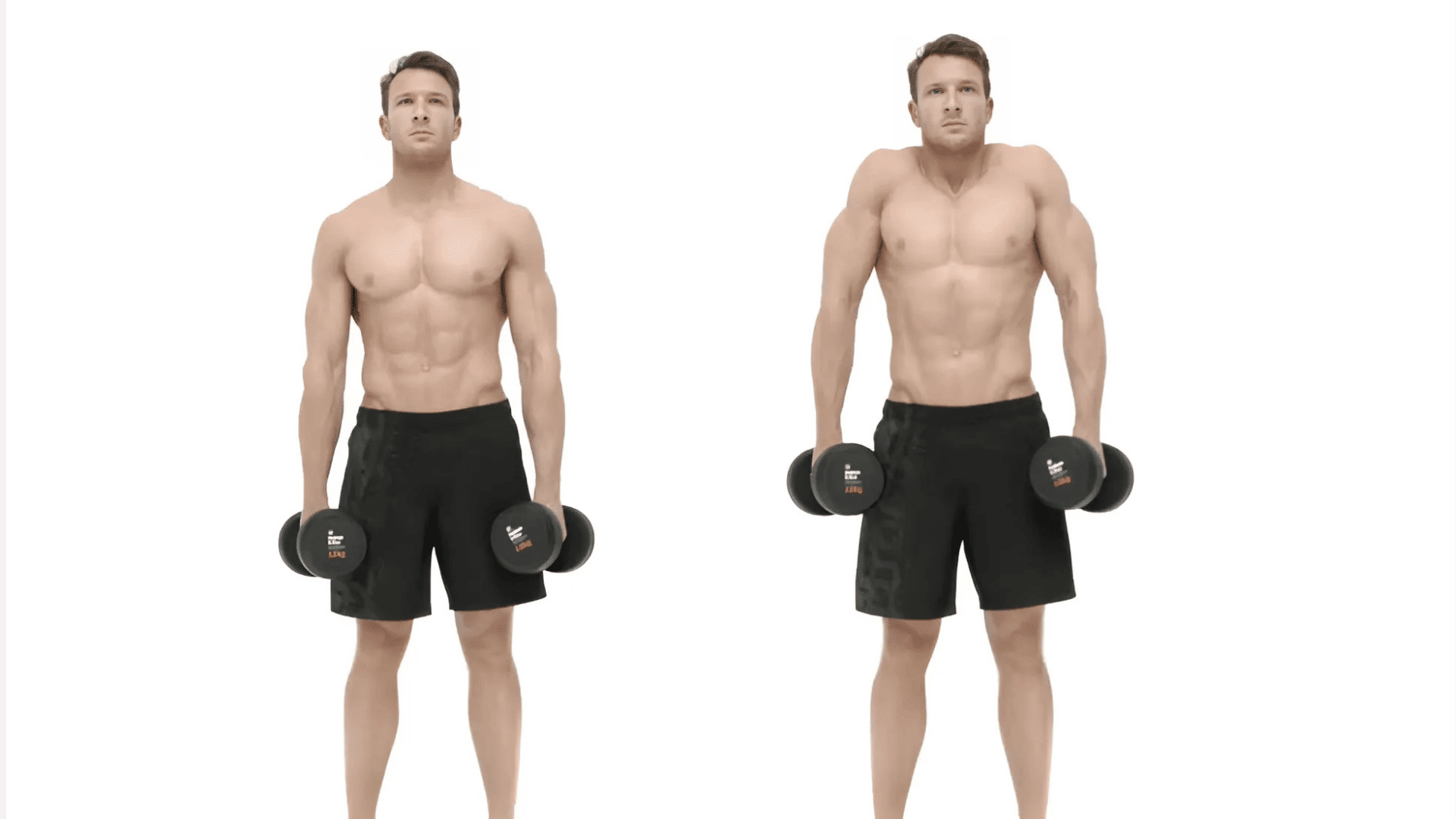
Stand tall with feet shoulder-width apart. Lift your shoulders slowly toward your ears, hold for 3 seconds, then lower with control. Repeat 10–15 times. You can also roll the shoulders forward and back in a slow circular motion.
Why it helps: Relieves tension that often builds in the upper trapezius and neck muscles, improving circulation and reducing tightness linked to nerve pain.
Occipital Neuralgia Stretches
Gentle stretching can release tension in overworked muscles and restore flexibility. These targeted movements focus on the neck, shoulders, and upper back to reduce irritation of the occipital nerves:
9. Upper Trapezius Stretch

Sit or stand tall with shoulders down. Tilt your head to one side, bringing your ear toward your shoulder. Use your hand to gently increase the stretch if comfortable. Hold for 20–30 seconds per side and repeat 2–3 times.
Why it helps: Reduces tightness in the trapezius muscle, which commonly pulls on the neck and aggravates occipital nerve pain.
10. Levator Scapulae Stretch
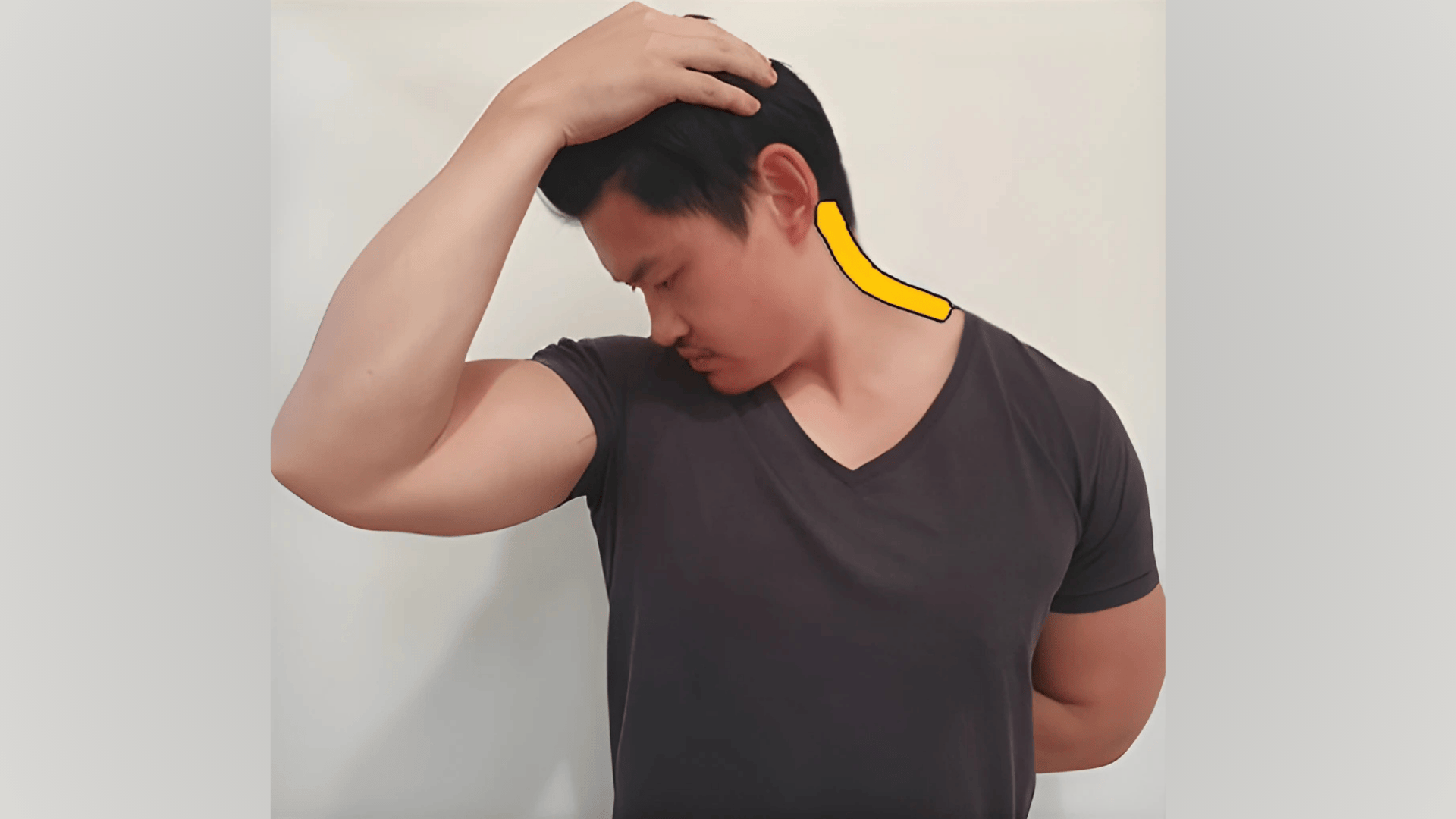
Sit tall, turn your head 45° toward one armpit, then gently look downward. Place your hand lightly on the back of your head to guide the stretch. Hold for 20–30 seconds and repeat on both sides.
Why it helps: It loosens the levator scapulae muscle that connects the neck and shoulder. This muscle is often tense in people with desk jobs or stress-related posture, contributing to nerve irritation.
11. Seated Neck Stretch with Towel
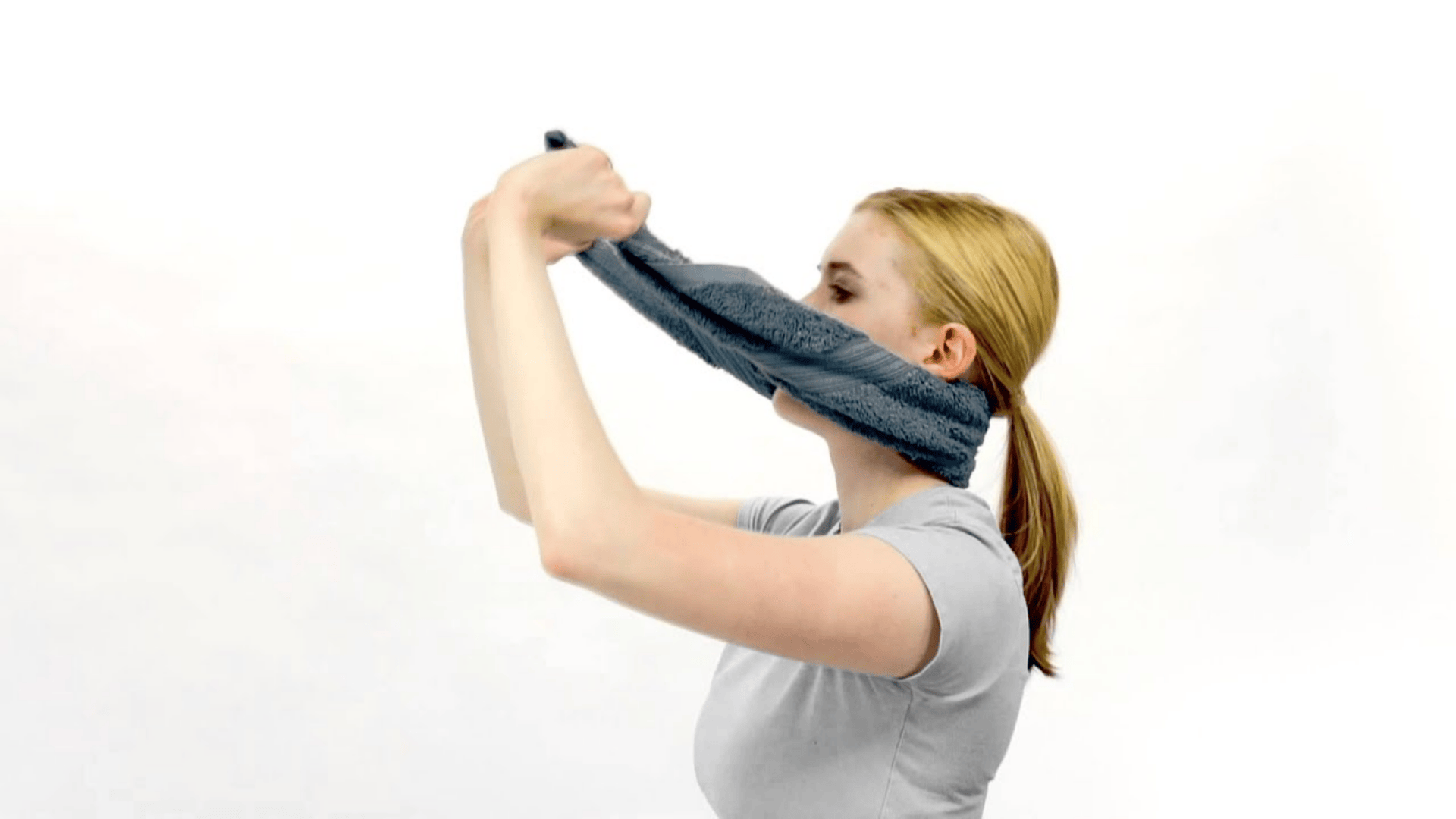
Sit upright and loop a towel around the base of your skull. Hold one end in each hand and gently pull forward while keeping your back straight. Hold for 10–15 seconds and repeat 3–5 times. Avoid jerking motions.
Why it helps: Creates a controlled, even stretch at the back of the neck, improving flexibility and reducing pressure on sensitive nerves without forcing the movement.
12. Wall Angels
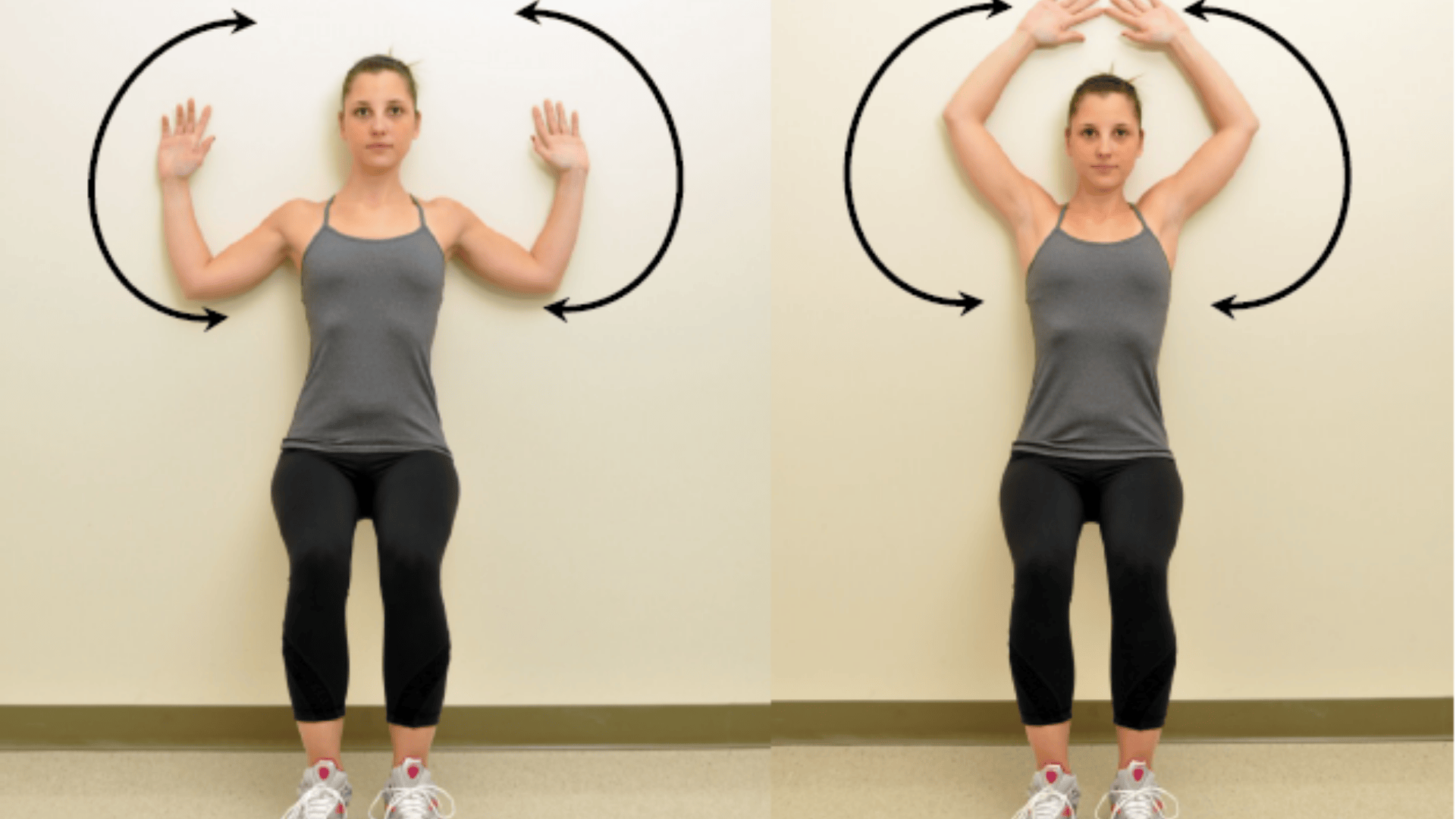
Stand with your back against a wall, feet slightly forward. Press your lower back gently into the wall. Raise your arms to a “goalpost” position and slowly slide them upward, then back down. Perform 8–10 repetitions.
Why it helps: Strengthens shoulder and upper back stabilizers while stretching tight chest and shoulder muscles. This promotes better posture, helping to relieve strain on the neck and occipital nerves.
Breathing and Relaxation Techniques
Stress often makes occipital neuralgia pain worse. A simple way to calm your body is through controlled breathing.
Start by placing one hand on your chest and the other on your stomach. Inhale slowly through your nose so your stomach rises while your chest stays still. Exhale gently through pursed lips, letting your stomach fall. Keep this rhythm going for 5–10 minutes.
Another option is square breathing. Inhale for 4 seconds, hold for 4 seconds, exhale for 4 seconds, and pause for 4 seconds before starting again. Repeat this cycle for a few minutes to relax your muscles and ease tension.
When to Seek Professional Help
Contact a doctor if:
- Pain spreads to the eyes or face.
- You experience weakness, numbness, or tingling.
- Vision changes occur.
- Exercises worsen symptoms instead of helping.
While exercises and stretches can bring relief, some cases may need medical support. Options include physical therapy, medications like NSAIDs or anticonvulsants, nerve blocks, or injections. These should only be considered with professional guidance.
Safety Tips for Exercising with Occipital Neuralgia
It’s important to approach these movements with care. Gentle, consistent practice can help ease pain, but pushing too hard may do more harm than good. Keep these safety tips in mind as you add exercises and stretches to your routine:
- Start gently and build gradually. Begin with a few repetitions at low intensity, then increase slowly as your body adjusts.
- Avoid lying flat on your back during flare-ups. This position can add pressure to the occipital nerves and worsen symptoms.
- Stop immediately if pain increases. If any movement triggers sharp or spreading pain, pause the exercise and rest.
- Use heat before stretches and ice afterward. Warmth can loosen stiff muscles, while cold helps reduce inflammation.
Listening to your body is the key. The right pace will help you stay consistent without causing setbacks.
Final Thoughts
I’ve learned that even small changes can go a long way in managing nerve pain. The occipital neuralgia exercises we covered are designed to release tension, improve posture, and take pressure off the neck and head.
I wouldn’t suggest trying them all at once. It makes more sense to start with a few, notice how the body responds, and then add more when it feels right.
Now it’s your turn. Begin with the basics and see what difference they make for you.
Pairing the exercises with steady breathing or short breaks during the day can also help calm flare-ups. If you’d like more simple ideas for self-care, check out other blogs on the website; you may find the next step you need!

